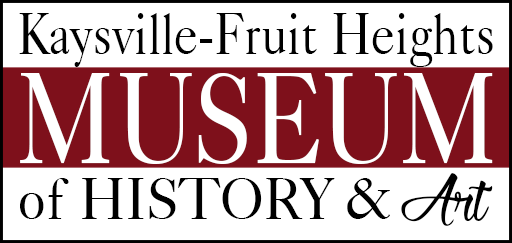Henry Hooper Blood

1872-1942
Government Leader, Business Executive, Church Leader
Henry Hooper Blood was one of the outstanding men of Davis County. His contribution to the development of his town, county and state were unmatched during his years of public service. He was beloved by the citizens of his hometown, his name remembered fondly for many years after his death.
Born in Kaysville, Utah on October 1, 1872, Henry Blood was the son of pioneers William and Jane Wilkie Hooper Blood. His parents were hightly regarded members of the community and set a high standard of religious and community service for young Henry. He learned early the skills of farming and animal husbandry, but was also able to attend classes at the Kaysville New Survey Elementary School. After completing eight grades, he continued his education at the Kaysville Academy, progressing through twelfth grade. Upon graduation, he was one of few peers attain any further education, attending one year at Brigham Young Academy in Provo, Utah and taught one year at the academy in Logan, Utah.
On June 4, 1896, Henry and his childhood schoolmate Minnie Ann Barnes were married. Together they had four children. In his early married years this enterprising young man took advantage of familial and friend relationships to help in a professional life that lasted for the next twenty-five years. He helped to organize the Kaysville Milling Company and managed the flour mill which later consolidated with the Layton milling enterprise.
Having learned the value of hard work as a boy, in manhood he was always involvedin multiple endeavors at a time. He took on the directorship of the Layton Sugar Company, became a director of the Barnes Banking Company, Kaysville Coopertive Mercantile Institution, Kaysville Canning Corporation, Inland Printing Company and a large shareholder in the Davis and Weber Counties Canal Company.
Business and government work was not his only concern. Much of his time was spent in purely voluntary pursuits. Blood helped in 1907 to organize the Kaysville Commercial Club and held the position of secretary in that service organization for twenty years. He served as trustee of the Kaysville Public Library and was influential in getting the library a permanent home.
An election to the position of secretary of the Davis County Democratic Party Central Committee at the age of 21 began a lifetime of civil service. This did not preclude a career as a businessman and a ecclesiastic leader. Blood served as Kaysville City Recorder from 1894-1897 and as Davis County Treasurer from 1897-1901. Before serving a mission in Great Britain for his church, he was appointed Minute Clerk for the Utah State Senate, a position that would later lead to the governorship.
While presiding as bishop of his church unit, he simultaneously served terms in the Kaysville City Council over the years 1898 to 1911. Civic minded by instinct and parental example, he also took the position of chairman of the Davis County Board of Education in subsequent years.
Blood was bishop of the Kaysville Ward when in 1912 a new tabernacle was built. At the ocassion of the dedication of the cornerstone, he wrote and read a history of his hometown. Of his beloved hometown, Henry Blood stated, “Reliable testimony is given that during the early days in Kaysville the stream that furnished the central part of town was so low that for three months at a time no water crossed the main street, yet now from the same canyon there comes enough water to convert many hundreds of acres into beautiful gardens, orchards and farms, with hundreds of homes made attractive by lawns and beds of flowers.”
He recorded the earliest known history of the area with an account of indigenous peoples who occupied the land prior to his pioneer parentage. He noted the existence of huts thought to belong to mountain men and trappers on the land his parents later farmed.
Sources
- Utah State Archives , “Early Settlement of Kaysville.” Bishop Henry H. Blood. A paper read at the exercise in connection with the laying of the cornerstone of the Kaysville Tabernacle, July 24, 1912.
- The Weekly Reflex. William P. Epperson. “Personal profiles of Henry H. Blood” published December 22, 1912 and December 20, 1922.
- The Weekly Reflex. “The Kaysville Tabernacle Dedicated.” published Thursday, May 28, 1914.
- The Weekly Reflex. June 25, 1942. Obituary-Funeral-Memorial-Editorial.
- Photos courtesy of: Kaysville – Fruit Heights Museum of History and Art Collection, a gift of Dave Ellison representing the Blood Family. All rights reserved.










